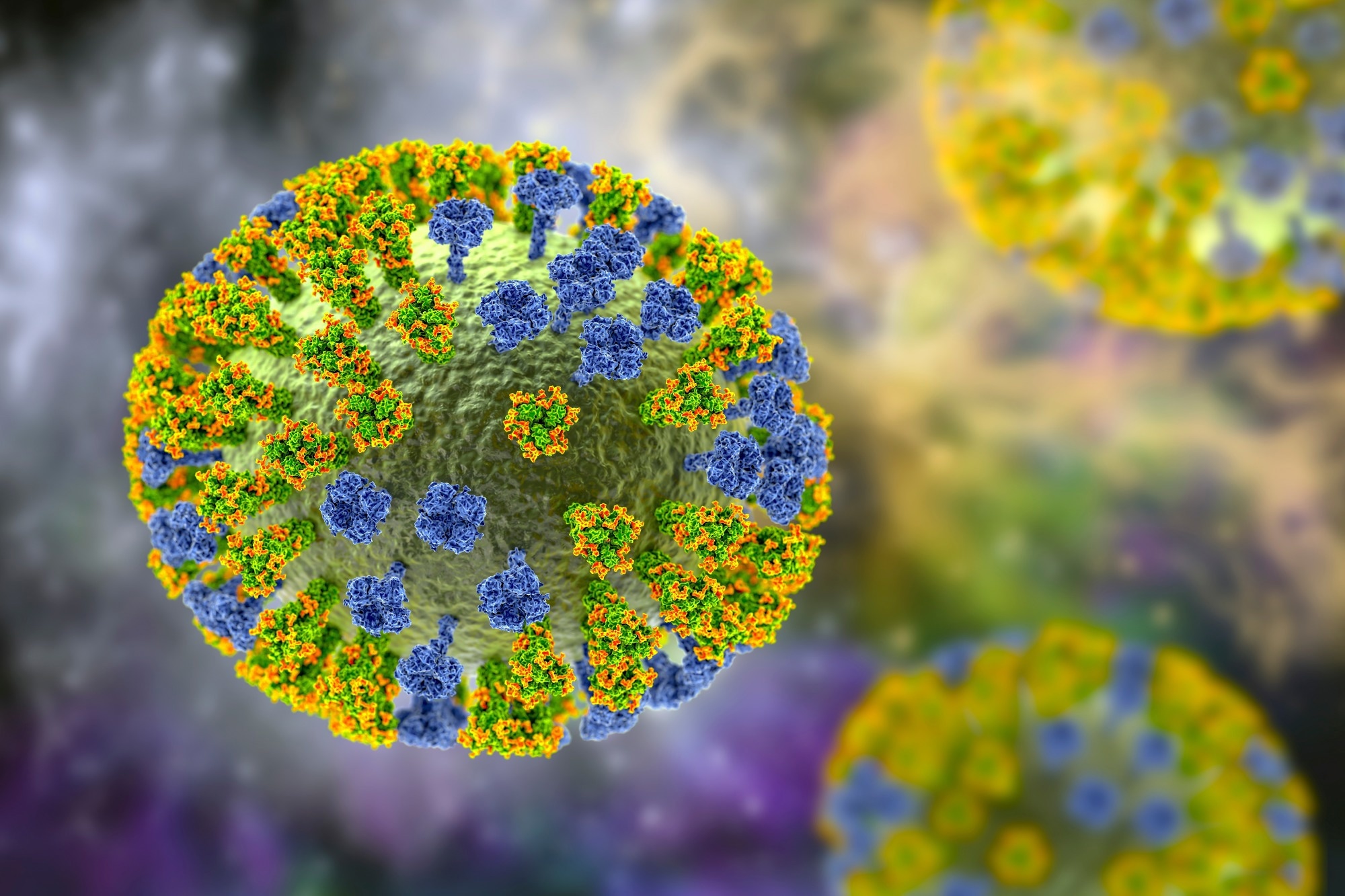In a recent study published in the Emerging Infectious Diseases Journal, researchers investigated the genetic origin, distribution patterns, and antigenicity of two deceased migrating swans from China infected with the H5N1 novel avian influenza viruses (AIVs).
 Study: Novel Avian Influenza Virus (H5N1) Clade 2.3.4.4b Reassortants in Migratory Birds, China. Image Credit: KaterynaKon/Shutterstock.com
Study: Novel Avian Influenza Virus (H5N1) Clade 2.3.4.4b Reassortants in Migratory Birds, China. Image Credit: KaterynaKon/Shutterstock.com
Background
Highly pathogenic AIVs (HPAIVs) such as H5N1 were discovered in 1996, and ever since, H5-type HPAIV species have developed into antigenically divergent genetic clades, resulting in persistent outbreaks among birds.
Long-distance and rapid transmission of H5-type HPAIVs indicates that migratory birds are crucial to HPAIV transmission across the globe.
Thus far, at least four waves of H5 virus transmission have occurred: 2.2 clade H5N1 viruses between 2005 and 2006, H5N1 2.3.2.1c clade H5N1 viruses between 2009 and 2010, 2.3.4.4a clade H5N8 clade and 2.3.2.1c clade H5N1 viruses between 2014 and 2015, and 2.3.4.4b clade H5Ny viruses between 2016 and 2017.
The most recent outbreak of 2.3.4.4b clade H5N1/H5N8 HPAIV epidemics among wild and domesticated birds in Africa and Eurasia commenced in 2020-2021.
H5N1, H5N6, and H5N8 infections have been infrequently reported among humans, emphasizing the potential for zoonotic transmission of H5 highly pathogenic AIVs.
H5 HPAIVs were responsible for a minimum of nine outbreaks among wild avian species on the Chinese mainland since 2021. Major H5N1 HPAIV outbreaks in domesticated poultry occurred in the United States (US) and Europe between 2021 and 2022.
About the study
In the present study, researchers reported on H5N1 clade 2.3.4.4b reassortment among the migrating avian population of China.
Oral swabs and pulmonary samples were obtained from a dead whooper in Inner Mongolia, North China, and a dead black-colored swan in Zhejiang, East China, on 3 November and 15 November 2021, respectively.
Subsequently, viruses were isolated among specific pathogen-free (SPF) chicken embryos and verified using reverse transcription polymerase chain reaction (RT-PCR).
Sanger sequencing was performed, and the whole genomes were deposited in the Global Initiative on Sharing All Influenza Data (GISAID) and NMDC databases.
The team reconstructed Bayesian time-resolved phylogenetic origin trees for all three H5N1 viral isolate genes based on the National Centre for Biotechnology Information (NCBI) and GISAID references.
Further, geographic analysis was performed to map the spatial coordinates. In addition, the team mapped the host types and neuraminidase (NA) or hemagglutinin (HA) subtypes to ascertain the most probable avian virus ancestor.
Furthermore, hemagglutination inhibition (HI) assays were performed to assess Re-11 [H5N6 (A/duck/Guizhou/S4184/2017)], Re-13 [H5N6 (A/duck/Fujian/S1424/2020)], and the Re-14 [H5N8 (A/whooper swan/Shanxi/4–1/2020)] vaccine immunogenicity against the H5N1 viruses and H5N8 HPAIVs, which were detected in the year 2020.
Results
In November 2021, three H5N1 HPAIVs were detected, i.e., the Ws/NC/AK1-O/2021 virus and the Ws/NC/AK2-O/2021 virus among samples from the dead whooper of North China, and the Bs/EC/74-Lg/2021 virus from those of the deceased black swan of East China.
The H5N1 strains induced severe histopathologic alterations among wild avian species, characteristic of HPAIVs, including numerous basic-type amino acid molecules at the site of HA breakdown.
All three H5N1 HA genes shared the 2.3.4.4b.2 clade. Phylogenetic analysis showed that the three new H5N1 viral strains were reassortants from Ws/2021 (Ws/NC/AK1-O/2021 and Ws/NC/AK2-O/2021) and Bs/2021 (Bs/EC/74-Lg/2021).
Several regrouping activities among H5N8 HPAIVs produced the viruses. The ancestors of most genes in the two reassortants originated from wild Anseriformes and were most likely transmitted during summer 2021, except for genes such as the Bs/2021-like M gene, which might have evolved from domesticated poultry.
Nearly all neuraminidase genes of the H5N1 viruses discovered on China's mainland between 1996 and 2018 were of the EA-1 clade. The first cluster included four H5N8 HPAIVs discovered among wild avian species in 2020, the Re-14 strain, eight H5N6 viruses, and one H5N8 virus that caused human infections.
Bs/EC/74-Lg/2021 clustered with H5N1 influenza viruses originating from South Korea and Japan in the second cluster, with 99.0% to 100.0% identical sequences.
In the third cluster, the North China whooper swan-derived viruses showed 99.0% antigenic similarity and grouped with European-origin H5N1 viral strains. Most H5N1 viruses discovered between 2020 and 2021 were grouped in the third cluster.
Furthermore, two H5N1 (third cluster) virus infections were documented among United Kingdom (UK) and US residents between 2021 and 2022.
The HA analysis showed antibody titers 256 between homolog antisera and H5 vaccine antigens and much lower titers (2.0 to 16) for Re-11 and Re-13 by contemporary H5N1/H5N8 viruses.
In comparison, H5N8 viruses from the first cluster showed modest antibody titers (64.0) for the Re-14 antiserum. Ws/NC/AK1-O/2021 and Bs/EC/74-Lg/2021 H5N1 viruses from the second and third clusters, respectively, exhibited titers of 32 and 128, respectively.
Conclusion
Overall, the study findings highlighted the detection of three H5N1 HPAIVs among wild avian species during the fall of 2021 in China that underwent reassortment during long-distance transmission via avian migratory routes.
The low antigenic similarity among H5N1 and H5N8 viruses, despite originating from the same genetic clade, underscores elevated risks of H5N1 infections among inadequately protected flocks in the Chinese mainland.
The findings also highlighted the need for globally coordinated AIV monitoring among migratory birds to facilitate early detection and prompt treatment of AIV infections.